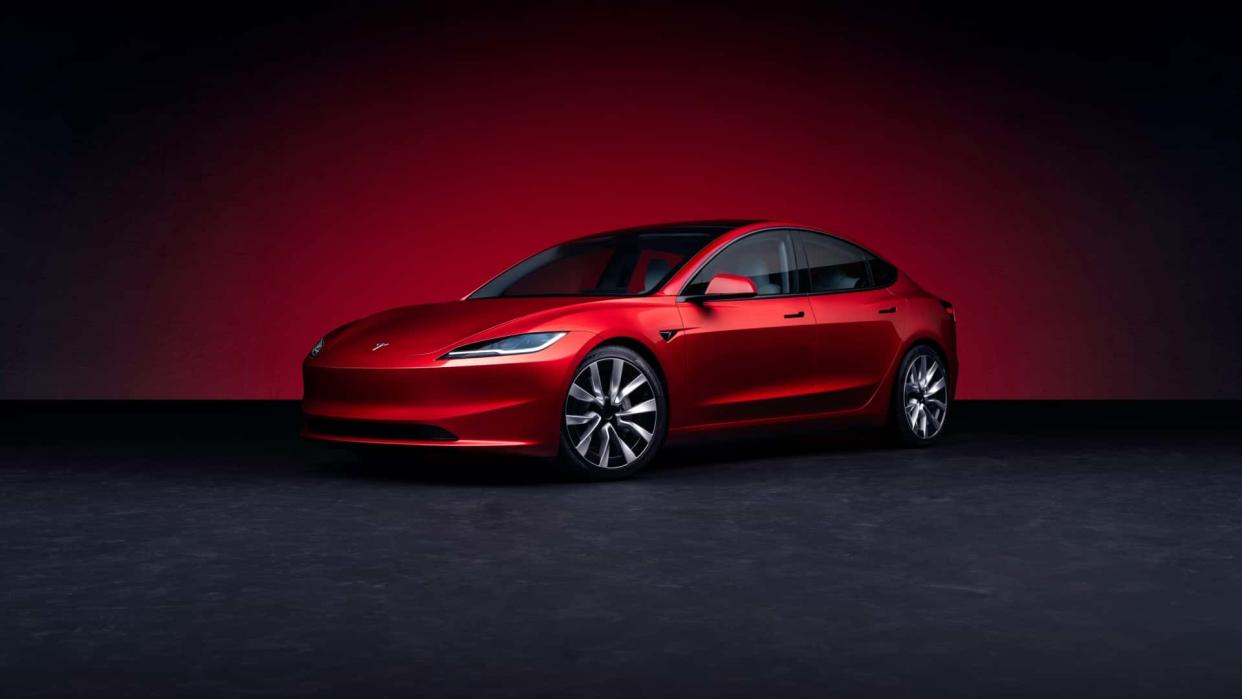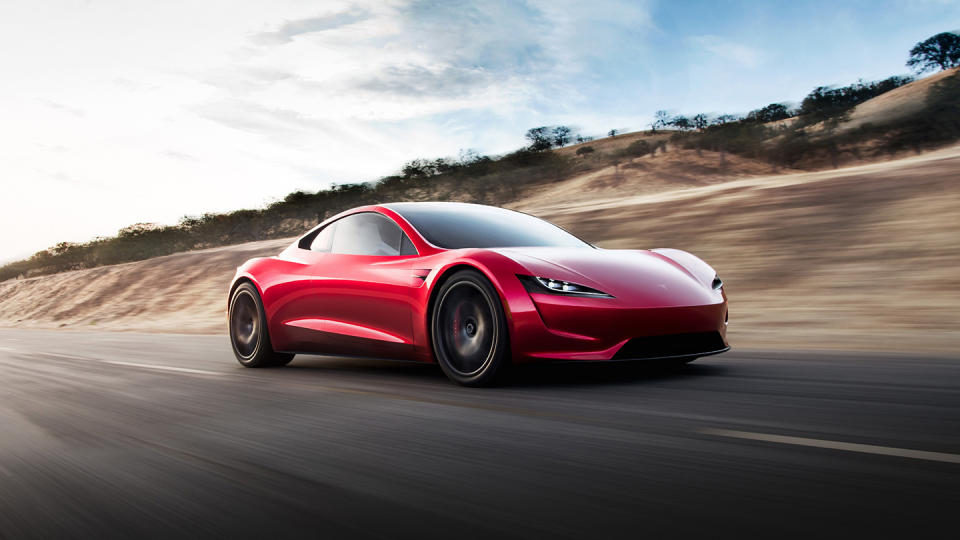Elon Musk says Tesla Robotaxi is coming 8 August, but will it?

- Oops!Something went wrong.Please try again later.
Elon Musk tweeted earlier this month to say a “Tesla Robotaxi” will be unveiled on 8 August. The announcement came hours after a Reuters report claimed Tesla had cancelled development of a low-cost, entry-level electric car, known as the Model 2.
It is now thought Tesla has shifted its attention from the Model 2 to the unnamed autonomous taxi, and that the two vehicles likely share many of their components. Is this Musk making a bold bet on what he believes to be the inevitable future of the motorcar? Or will this be another example of Tesla showing off a concept years before anything is ready to go on sale?
Just a few years ago, I’d shun the idea of betting against Musk. His timekeeping has ever been great, but the Model S and Model 3 were landmark moments in the history of the car. That they came from a startup – a startup that quickly showed the rest of a century-old industry which way to go – is truly remarkable.
But now Tesla must be viewed in a different light. The Cybertruck arrived years late and fell short of expectations in terms of range, performance, price and functionality. The second-generation Roadster supercar is also years behind schedule and Tesla said in late-2023 it has built only around 70 examples of its Semi articulated truck, which was first revealed back in 2017.

Then there’s Autopilot. Musk said in 2016 that all cars currently in production would be capable of fully autonomous driving and that a Tesla would drive itself across the entire United States by the end of 2017. That didn’t happen, and neither did Musk’s claim in 2019 that by mid-2020 Tesla drivers using Autopilot will no longer need to pay attention to the road ahead. Musk also said that Tesla would begin rolling out autonomous taxis in the US in 2020, and that Tesla owners would be able to rent their car out as a driverless taxi, earning them money while they worked or slept.
Speaking in 2019, Musk said: “We will have more than one million robotaxis on the road… a year from now, we’ll have over a million cars with full self-driving, software…everything.” He even claimed a driverless Tesla could earn its owner up to $30,000 (£24,000) a year by acting as an autonomous taxi, and that it would be “financially insane to buy anything other than a Tesla.”
Half a decade on and none of this has happened. Tesla’s contentiously-named Full Self-Driving technology, an add-on to the Autopilot driver assistance system, has improved in the years since those bold claims but still requires constant driver supervision. The company lags far behind Waymo, the Google spin-off that has operated a fully driverless taxi service to the public in Phoenix, Arizona since 2022.
A Waymo-type service is likely what Musk has in mind for Tesla. But instead of using vehicles built by other companies – in Waymo’s case, it adds its own driverless tech to a fleet of Jaguar I-Pace, below, and Chrysler Pacifica cars – Tesla will have its own, purpose-built robotaxi.

Waymo has shown for years that a robotaxi service is technically possible. It is legally permissible too, but NBC reported last week how Tesla is yet to contact any US agency responsible for granting permits to run driverless taxis on public roads. Such vehicles are currently legal in Arizona, California and Nevada, but regulators in all three states say they have not heard from Tesla about its robotaxi plans.
Applying for and receiving permits to operate a driverless car on public streets is not the work of a moment.
What will Tesla reveal on 8 August?
Tesla is for now promising to show a robotaxi on 8 August, not necessarily a driverless taxi service. And while I’ve little doubt a new Tesla vehicle will appear, functional or otherwise, Tesla has a habit of revealing new products years before customer deliveries begin. There’s little reason to believe it will be more punctual this time around.
Which is, frankly, a concern. The Cybertruck is a total folly that should never have made it beyond the stage of an attention-grabbing concept car; the internet is littered with videos of the so-called Full Self-Driving system making mistakes on the public road; the Roadster is now four years behind its 2020 target and Musk wants to equip it with rocket thrusters.
I truly believe the automotive landscape is a better place with Tesla a part of it. The company hit the fast-forward button on the electric car industry and offers a world-class charging network. The Model 3 and Model Y are good cars with a great range, sensible price and have sold incredibly well.
Tesla should have stuck with Elon Musk’s original 2006 game plan and invested profits from selling pricier cars into the development of cheaper models. This strategy worked perfectly when the expensive Model S led to the affordable Model 3, and Tesla should have repeated that play with a Model 2 and even a Model 1. Instead, it ploughed ahead with the Cybertruck and has now seemingly canned the Model 2 in favour of a driverless taxi.
Perhaps that’s the right strategy for a future headed away from car ownership; the perfect vehicle for a generation that already opts for Uber instead of driving itself. It’s the sort of big-picture stuff that made Brand Musk what it is. I just hope this time there’s a real business model and safe, reliable technology below the surface.

